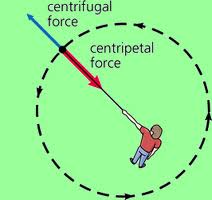

25:40 see Altmann, in bibl., 25–26) by *Baḥya ibn Paquda ( Ḥovot ha-Levavot, 2:4) and by *Judah Halevi in his Kuzari (4:3), where he quotes "the philosophers" who compared the world to a macranthropos ("large man") and man to a microcosm, implying that God is the spirit, soul, mind, and life of the world.
Microcosm defintion series#
Lambert (1891), 67ff., 91), where he compares God to life and intelligence and sets forth a series of analogues between the universe, the sanctuary, and man (followed by Abraham Ibn Ezra in his commentary on Ex. It is mentioned, for example, by *Saadiah Gaon in his commentary on the Sefer Yeẓirah (ed.

(For other rabbinic sources, see Altmann, 21, n.) In medieval Jewish philosophy the motif is frequently cited, being part of the common stock of popular philosophy found in such works as the Epistles of the *Brethren of Sincerity. Among the latter is found a long list of gross analogies between parts of the world and parts of man in Avot de-Rabbi Nathan ( ARN 2 31, 92). He is said to have drawn his theory of the microcosm from Greek and rabbinic sources (A. Wolfson, Philo, 1 (1948), 424, n.), stressing the parallel between the human and cosmic minds ( logoi e.g., Op. Philo frequently compares man as microcosm βραχὑς κόσμο to the universe (Conger, in bibl., 16–18 H.A. Microcosmic speculation tended to combine with astrology (correspondence between heavenly bodies and parts of the human body), medicine (universal and human nature, parallel between the four elements and the four humors), and magical practice (universal sympathy). Furthermore, the neoplatonic notion that the human mind is potentially a κόσμος νοητός ("intelligible world") implies that by knowing the intelligibles man becomes identical with all being.

The elaboration of the neoplatonic hypostases was, in effect, a projection of human psychology to the supersensible world. The idea that man exemplifies all being was also used to buttress the theme of man's superiority, dignity, or freedom: as nodus et vinculum mundi, he epitomizes the entire scale of being (spiritual and material) and determines his own place, unlike angels and beasts whose nature is fixed. The analogy was frequently invoked to argue for the existence of a world soul or mind which directs and orders the physical universe as the soul does the body. Though the broad diffusion of the microcosm motif in late antiquity (in Gnostic, Hermetic, neoplatonic, neopythagorean, Orphic, and stoic writings) complicates the study of original sources, its occurrence in medieval Arabic and Hebrew texts is mainly the result of neoplatonic influence. The term is said to be first attested in Aristotle ( Physics, 8:2, 252b, 26–27), though the motif is older indeed, the notion that some aspect of reality (the city, sanctuary, man) reflects the cosmos is both ancient and widespread. The Arabic (ʿ ālam ṣaghīr), Hebrew ( olam katan), and Latin ( mundis minor) terms are literal equivalents of the Greek. mikros kosmos "small world"), term in the Western philosophical tradition referring to man as an epitome of the universe (the macrocos) in his parts and structure. Finally it is confirmed in the program of Ayurvedic therapeutics, which aims at establishing various kinds of "appropriateness" for the sake of effecting samayoga-the "harmonious joining" of person and world.MICROCOSM (from Gr. It is likewise confirmed by the Ayurvedic logic of sāmānya (translated as "identity"), which governs the meaning of the list of person-to-world correspondences in CS 4.5 and its often misinterpreted claim, puruṣo 'yam lokasaṃmitaḥ. This is confirmed by the CS's several definitions of purusa, which are alternately posed in terms familiar to Vaiśeṣika, early (pre-"classical") Sāṃkhya, early Buddhism, and Upaniṣadic monism. Instead, early Ayurveda asserts that personhood is worldhood, and thus the person is non-different from the phenomenal totality (spatial and temporal) of his existence. It argues that, contrary to the usual interpretation, early Ayurveda does not consider the person to be a microcosmic replication of the macrocosmos. This paper examines the purusa concept in the Caraka Saṃhitā (CS), an early text of Ayurveda, and its relation to Indie thinking about phenomenal worldhood.


 0 kommentar(er)
0 kommentar(er)
